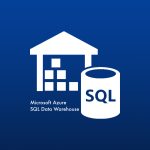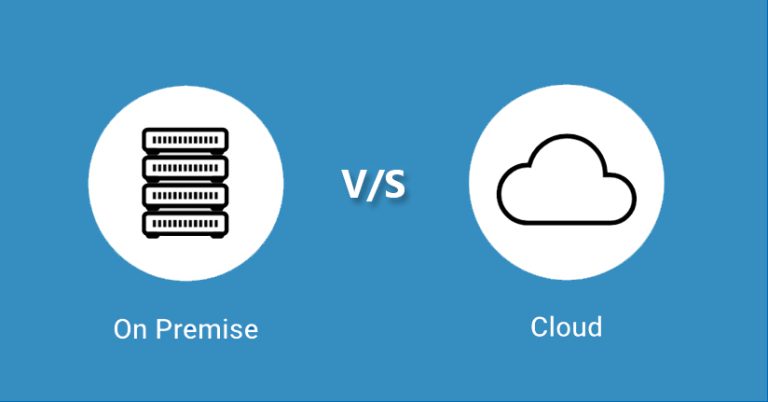What is Data Modeling and why is it important for an organization to build an effective data analytics system and getting optimum ROI on data investments?
Just as architects consider blueprints before starting a project, every enterprise should consider its data for important business decisions and projects. Data is arguably the most valuable asset of any organization. It is the foundation of any knowledge.
Unfortunately, understanding data is only half the problem. The other half is being able to document that understanding and share it with others.
How can enterprises verify that their data is being efficiently and fully utilized to enhance business if no standards exist to check the basic accuracy, coverage, extensibility, and interpretability of data? Without a process in place to maintain clean and quality data your enterprise could trust, even the best data-driven decisions will have no power or backing. Data modeling helps create a visual description of your business by understanding, analyzing, and, clarifying data requirements and how they underpin your business. It is an essential step in the planning stage of any analytics deployment or business intelligence project.
Table of Contents
What is Data Modeling?

Around 70% of software development efforts fail due to premature coding. Data modeling helps in describing the structure, associations, constraints relevant to available data, and eventually encodes these rules into a reusable standard. Preparing a robust data model essentially means knowing the process and its benefits, the various types of data model, best practices, and the relevant software tools which are available.
A data model is a tool that helps describe core business rules and definitions around data. Business and technical shareholders benefit from Data Modeling by seeing complex data concepts in an intuitive, visual way.
Data Modeling done right – Advantages of data modeling

When done right, data modeling delivers some very specific benefits that are crucial to any enterprise’s effective business planning. It leads to better allocation of human and computational resources, predicts problems and errors before they arise, strengthens cross-functional communication, and enforces compliance (regulatory and internal) — all while guaranteeing underlying data quality, security, and accessibility.
At the business level, a complete data model design makes an organization more adaptable to change, lowers risks, and increases efficiency — ultimately reducing costs.
At the technical level, redundancy is reduced and systems naturally become easier to integrate, easier to interact with, and more compatible with each other.
Data Modeling best practices – A guide to unparalleled business advancement

Along with the countless benefits data modeling also comes with inherent dangers when creating and using incorrect models. To prevent unnecessary inefficiencies and delays, sticking to the best data modeling practices is absolutely essential.
- A holistic data modeling approach – It is always best to start with the broadest perspective. The holistic approach could help discover the unconsidered entities to include in a conceptual model, or even highlight inefficiencies and lead to organization-wide improvements. While enterprises often overlook this process, this is also one that should be revisited as a business or application evolves.
- Concept schema is important – Conceptual data model is the foundation for the entire process. Concept modeling essentially refines the original idea or purpose behind a project to its business requirements as well as the constraints. Failing to define these at the beginning incurs the great risk of needing to revisit assumptions later. Even worse, there is also a danger of passing along ambiguous or incorrect interpretations of entities and relationships, resulting in incorrect data translations.
A completed conceptual model is, in fact, a standalone communicable resource, potentially the only documentation which can be understood across an entire enterprise. Conceptualization should always be a well-defined step in any new data modeling process. - Verify your logic – It is important to verify your logic. It is the connecting bridge between business requirements and technical constraints. This step is extremely helpful in validating the compatibility between vision and resources. Before work on a data model can even begin, entity relationship diagrams (ERDs) must be carefully drawn and reviewed, and entities themselves should be classified into logical buckets.
This step weighs and validates the feasibility of organizing the data previously determined as a business requirement. Logical barriers and incompatible ideas with structured data storage must be identified and resolved here. - Build a detailed and reusable reference – At this stage, the results of all discussions are synthesized along with details of a data storage project. The focus is on a full-fledged set of technical guidelines rather than on an abstract perspective. These technical guidelines help enterprises codify specific objects and technologies containing them.
The physical schema must be an engineering reference that is fully complete, specific, yet navigable. With this in mind, a successful physical modeling step will create:
- A complete diagram of data objects, containers, and relational associations
- A data dictionary that links every technical component and object to a summary of the relevant information passed down from the more abstracted models
Data Modeling trends from 2020 every CIO should get familiar with

Traditionally, data modeling process was done using data dictionaries—documents that aim to explain the contents and format of every field in a data structure. The sad reality of those documents is that they have to be manually created and updated, and hence are rarely updated. The result was – outdated, redundant documents and frustrated architects and software developers. With 2020 radically changing the data modeling industry, let’s discuss a few trends from 2020 which will be dominant in 2021 as well –
Ensemble Modelling – Ensemble modeling runs two or more related but different analytical models and then synthesizes the results into a single score. A common example of ensemble modeling is a random forest model. By combining various models or analyzing multiple samples, data scientists and other data analysts can reduce the effects of those limitations and provide better insights to business decision-makers.
Model Validation – Operating at the intersection of regulatory compliance, risk management, and model assessment; model validation is pivotal for deploying models and rectifying discrepancies between synthetic training data and production data. In model validation, enterprises may have to scrutinize their model results to ensure performance is as it was during training. The data governance capabilities of data modeling are an important dimension of this data management discipline, particularly when checking the data quality upon which the overarching value of data is fixed. Consequently, this process also plays an instrumental role in optimization and increasing confidence scores.
Better Automation and Machine Learning – Due to the advancements in big data, the IoT, cloud data warehousing, ELT, machine learning; organizations will now have access to more schema variations than ever before. This will help enterprises to quickly address data modeling differences via data shapes, ontologies, and Shapes Constraint Language (SHACL).
Digital Twins – Digital twins were earlier solely deployed in the Industrial Internet and smart manufacturing applications, but gradually their use cases started expanding to healthcare, property management, and the hospitality industry. To put it simply, digital twins are 3D models of IoT data from physical devices. Let’s look at the three types of digital twins you can deploy for data modeling.
- Operational Digital Twins – This extends to include numerous use cases, such as digitizing supply chain networks to make agile, smarter decisions.
- Asset Digital Twins – As the name suggests, it only focuses on data emitted from a specific equipment asset.
- Future Digital Twins – Unlike the first two, these rely on predictive modeling for accurate forecasts of weeks in advance. Their real-time streaming data is particularly suitable for cognitive statistical models. It is a predictive future digital twin of operations, enhancing your planning considerably.
Top Data Modeling tools – A comparative analysis
[table id=7 /]
Future of Data Modeling and the cloud

Data modeling world is expanding and with the rise of cloud storage and computing, it will only get bigger and better. The promising results the two offer together, data modeling for data warehouse will soon be a top priority of all enterprises. The two processes will continue to add value to businesses and help them plan better for the foreseeable future.
- These techniques together provide clear lines of cross-functional communication and understanding in a constantly evolving technological environment where those links only become more helpful.
- As enterprises move their infrastructures to the cloud, data modeling software helps stakeholders to make informed decisions about what, when, and how data should be transitioned.
- Understanding how to adopt technologies such as power BI models, ELT, data storage, migration and data streaming, and the like, start with a commitment to modeling the underlying data and the drivers for their existence.
Data modeling at its core is a paradigm of careful data understanding before analysis or action. With modern data modeling practices including codeless models, visual model building, representative data shaping, graph techniques, programming, and more, its relevance and that need will expand exponentially with the broader adoption rates in different domains.
Related Videos :
















